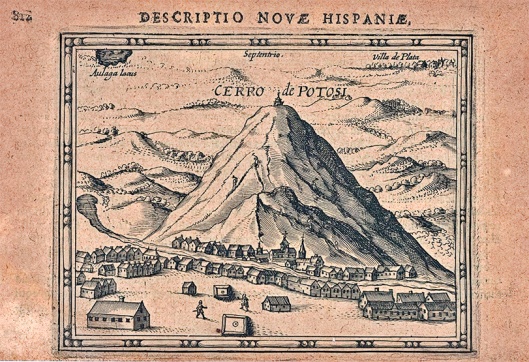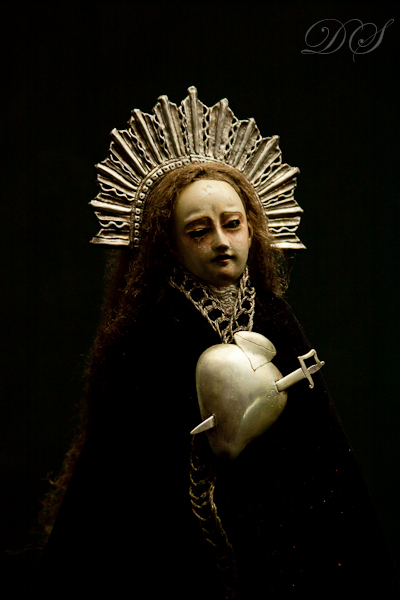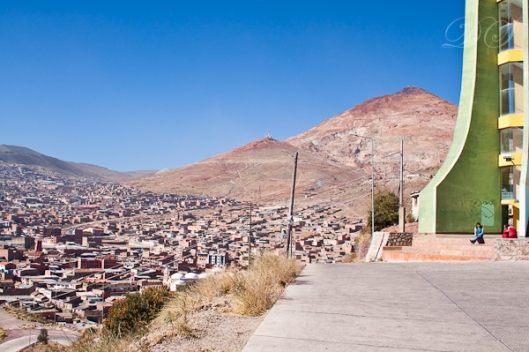Niektórzy z was zapewne pamiętają piosenkę “La La La“, wydaną w roku 2013 przez brytyjskiego producenta Naughty Boya, śpiewaną przez Sama Smitha. Utwór ten został numerem jeden w 26 krajach, w tym UK. Jednak dla mnie, nie sama piosenka, którą notabene bardzo lubię, ale teledysk do niej jest najbardziej interesujący. Wyreżyserowany przez Iana Pons Jewella i filmowany w różnych niesamowitych miejscach Boliwii: La Paz, Salar de Uyuni i Potosi. Na koncepcję teledysku wpłynęła historia Czarnoksiężnika z Krainy Oz oraz starej boliwijskiej legendy o demonie ‘El Tio‘, która również opiera się na magicznej podróży dziecka.
Some of you have probably heard the song ‘La La La’ released in 2013 by British producer Naughty Boy and featuring vocals from Sam Smith. The track reached number one in 26 countries, including on the UK Singles Chart. I like the song itself but the most important and interesting for me, is the video, directed by Ian Pons Jewell and shot in various stunning Bolivia’s locations: La Paz, Salar de Uyuni and Potosí. The concept of the video was influenced by the story of ‘Wizard of Oz’ and an old Bolivian legend of the demon El Tio, which also focuses on a child’s magical journey.
Był sobie kiedyś niesłyszący chłopiec, który żył razem z ojcem alkoholikiem. Po kolejnej awanturze, uciekł on z domu i zamieszkał na ulicy, gdzie zaprzyjaźnił się z bezdomnym psem. Po pewnym czasie, odkrył on talent do dostrzegania problemów innych ludzi i uzdrawiania ich swoim glosem. Pewnego dnia natknął się na człowieka, kamieniowanego przez mieszkańców wioski. Zaśpiewał on dla mężczyzny i uzdrowił jego serce. Razem z psem, poszli dalej w świat, gdzie spotykali zdeformowanego fizycznie człowieka, odrzucanego przez społeczeństwo. Chłopiec zaśpiewał także dla niego, uzdrowiajac jego ducha i umysł. Okazało się, że oszpecony mężczyzna został przeklęty przez demona El Tio, za to, ze nie chciał oddać mu swojej duszy. Musiał on opuścić górniczą wioskę, znajdującą się niedaleko pustyni, w której demon zamieszkał. El Tio był władcą podziemi, któremu śmiertelni ludzie oferowali prezenty, dla ochrony lub by złagodzić jego gniew. Mężczyzna powiedział, że każdy, kto słyszał głos demona, od razu znajdował się pod jego kontrolą. Chłopiec był głuchy i nie mógł usłyszeć demona, postanowił wiec uratować ludzi spod jego wpływu swoim głosem. Gdy dotarli na miejsce, chłopiec z ciężkim sercem, pożegnał swoich przyjaciół – dwóch mężczyzn i psa, i zszedł pod ziemię. Gdy spotkał demona, użył swojego głosu by go pokonać. Niestety, nie mógł ani wyleczyć, ani zniszczyć demona, więc postanowił zostać na zawsze w ciemnej kopalni, śpiewając dla El Tio, by odciągnąć go od przeklinania innych.
There was once a deaf boy who escaped his abusive home and found a stray dog to keep him company. After living on the streets for long time he discoved that he had a special talent of perceiving people’s troubles and he could heal them with his voice. Once he found a man that was being stoned by the villagers. He sung to the man and healed his heart. Afterwards, he found a man that was “different” and shunned by society. He sung to this person as well, and healed his spirit and mind. The disfigured man was cursed by a demon El Tio because he didn’t worship him, and had to abandon the village near the desert where the demon resided in the mind. El Tio was the lord of the underworld, to whom mortal people offer gifts in order to be protected or to ease his anger. The man said that anybody who could hear the demon would fall under his control. The boy was deaf so he couldn’t hear the demon, therefore he decided to save the people from his influence using his own voice. With the heavy heart, he left his friends – two men and a dog behind and went alone under the ground. When the brave boy met the demon, he used his voice to overcame him. Unfortunately, he could not heal nor destroy the demon, so he had to stay forever in the dark mine singing to El Tio to keep him away from cursing others.
Ta historia to może i tylko legenda, ale i dziś El Tio, a raczej jego diabelski pomnik, można znaleźć w starej kopalni srebra wewnątrz gory Cerro Rico, w pobliżu najwyzszego miasta na swiecie, Potosi. Górnicy, którzy nadal pracują w kopalni, jak i turysci schodzacy pod ziemie, utrzymuja demona szczęśliwym oferując mu liście koki i tytoniu. Zastanawiam się, czy wciaż można jeszcze usłyszeć uzdrawiajacy głos chlopca w podziemiach ‘bogatej gory’? Pewnie tak, bo El Tio już nikogo nie przeklina.
The story is a tale, but today El Tio, or rather his devil statue, can be find in the old silver mine inside the Cerro Rico, near Potosi. The miners who still work inside the ‘rich mountain’ as well as visiting tourists, keep the demon happy by offering him coca leaves and tabaco. I wonder, if is still possible to hear his healing voice underground? It must be, because El Tio, doesn’t curse people anymore.
W przeciwieństwie do anglo-saskiej opowieści, Boliwijski mit tak naprawdę nie ma szczęśliwego zakończenia. Obnaża natomiast brzydką stronę życia – molestowanie dzieci, ostracyzm publiczny wobec ‘innosci’, bezdomnośc, także zwierzat. Legenda daje również nadzieję, że nawet na tym okrutnym świecie, można znaleźć prawdziwych przyjaciół i gdzie zawsze znajda sie wyjątkowi ludzie, gotowi poświęcić swoje życie dla dobra innych. No i przede wszystkim pokazuje, że nie warto jest sluchac glupot;) Co o tym myślisz?
Unlike the Northern American tale, the Bolivian myth doesn’t really have a happy end. It exposes the ugly side of live – child abuse, the public ostracism of different and weak, homelessness, also of the animals. But it also gives a hope, that even in this cruel world, one can find real friends and there are always some exceptional human beings who are ready to sacrifice their life for the good of the others. And, most of all, it shows that it’s better not to listen to nonsense;) What do you think?
Wiecej informacji o mitycznym Potosi znajdziesz —>/ You can find more information about the mystical Potosi, —> here and —> here.

































